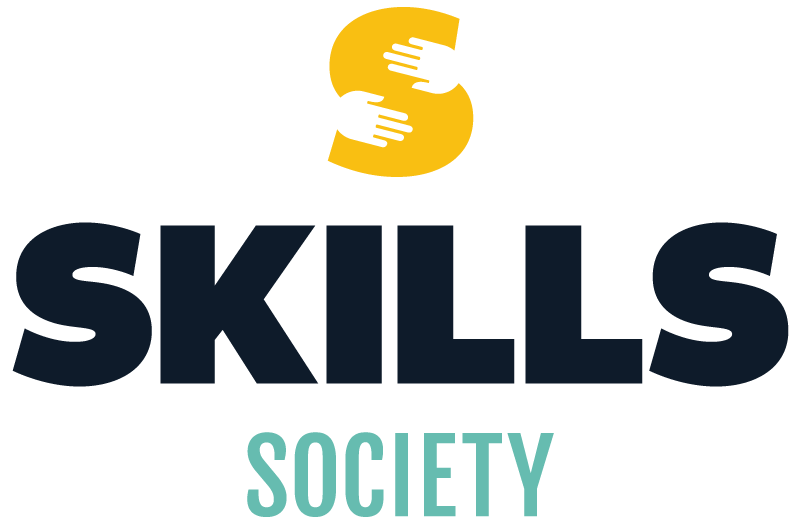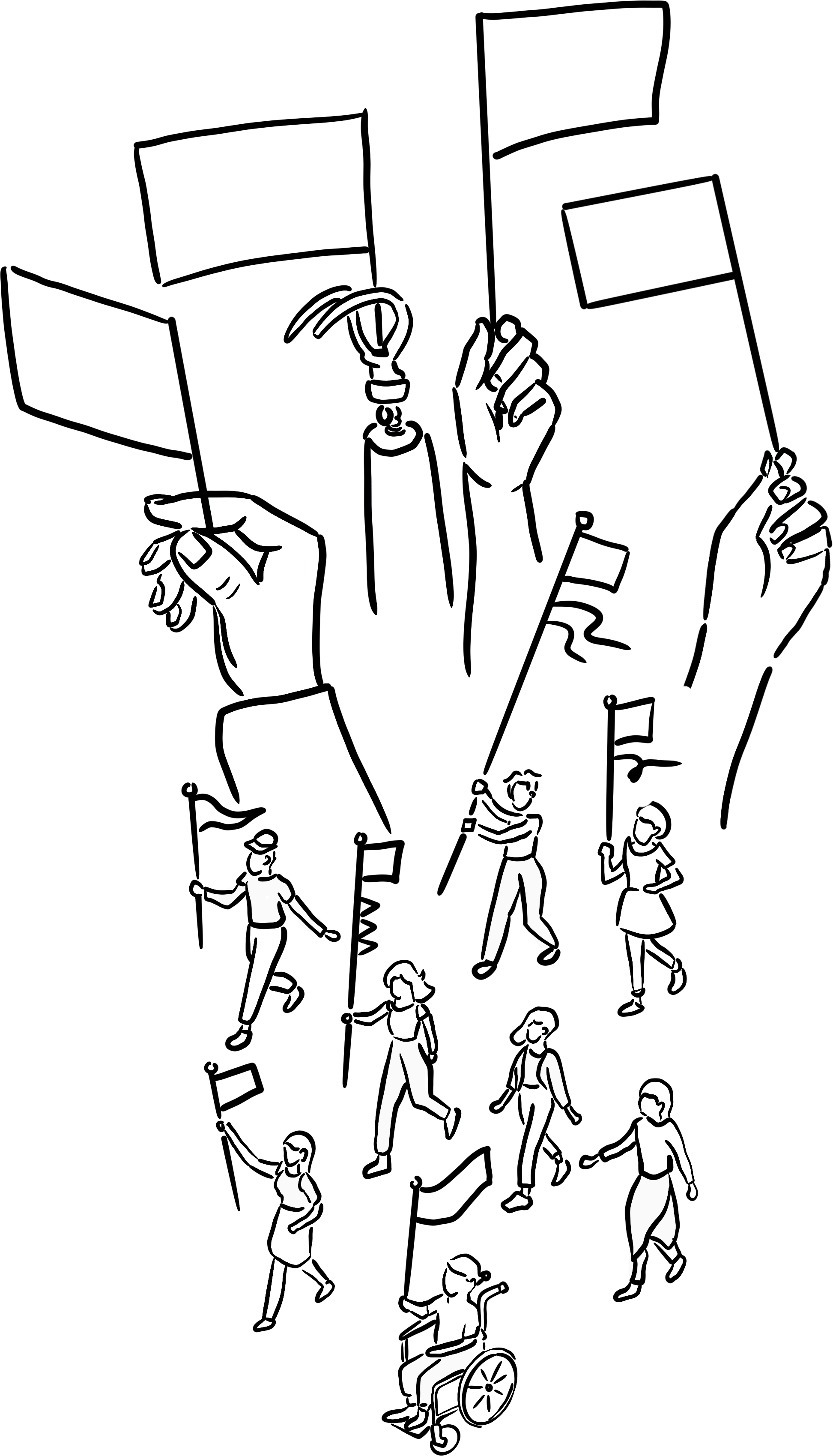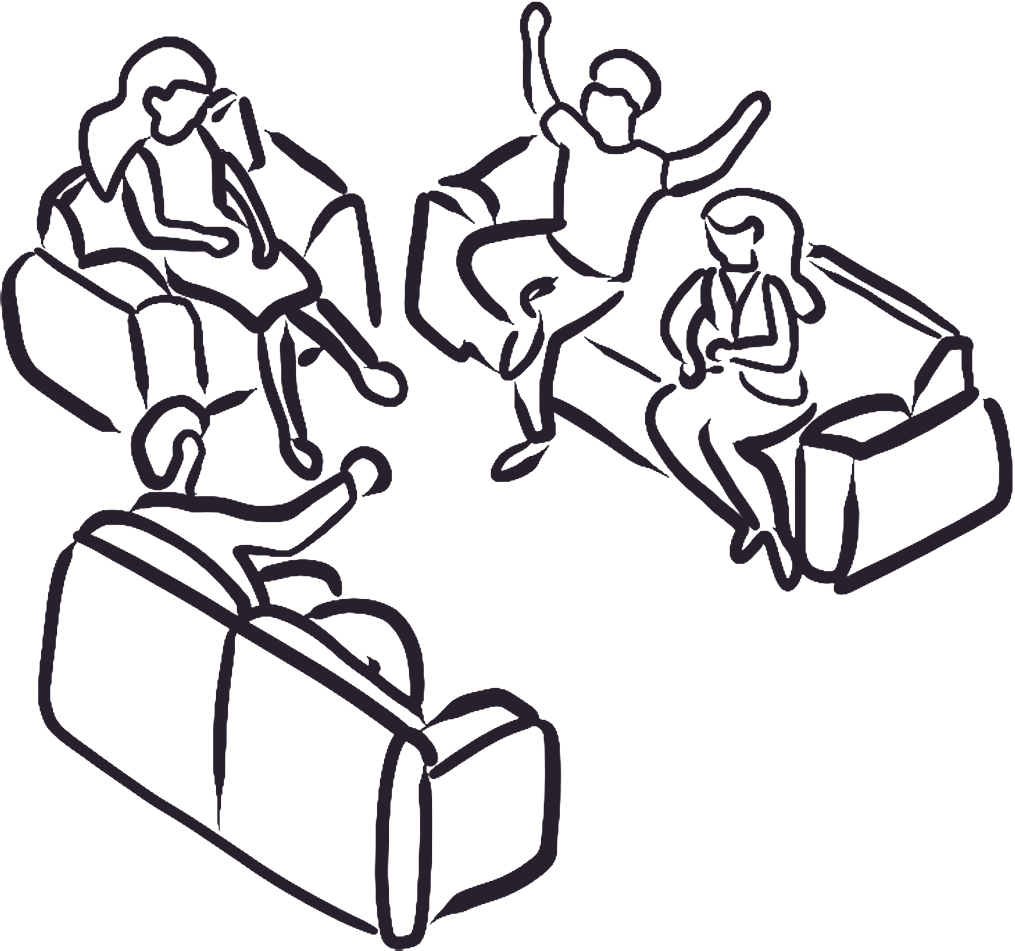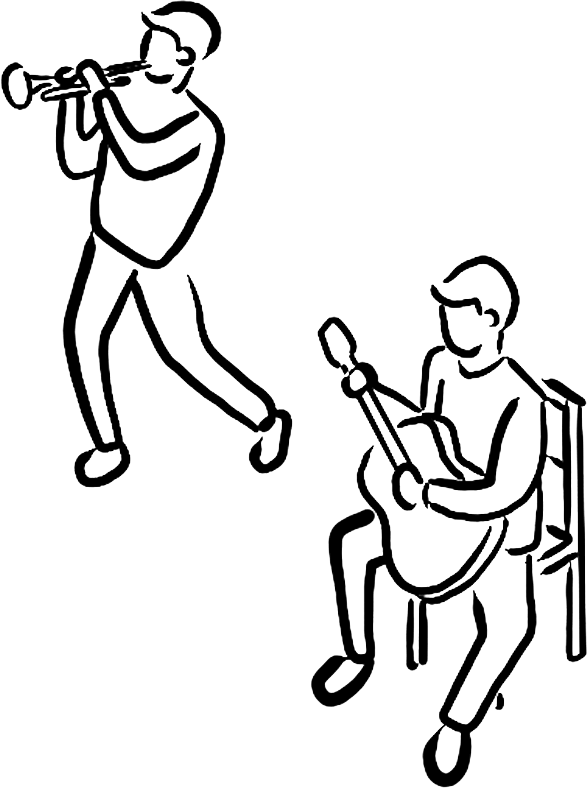The Role of Belonging in Deepening the Community Living Movement
There is a long history of exclusion and marginalization of people with disabilities in Alberta. Historically people did not have the same rights and opportunities as others and many had to live in institutions away from family, completely isolated from community life. The community living movement started in response to this exclusion. Families, self-advocates, and allies started to stand up and speak out against these harmful ways of treating people with disabilities, showing community members that people with disabilities are citizens too - deserving of respect, dignity, and rights. Today, the community living movement is a powerful force, advocating for the inclusion of people with disabilities in all aspects of community life and affirming their rights to live alongside neighbors, have friends, attend school with their non disabled peers, work, and participate fully.
A collective learning journey
We can think of the community living movement as a collective learning journey. We have all (people with disabilities, advocates, allies, and families) been reaching and fighting for the same goal - to affirm the rights of people with disabilities and advocate for their full inclusion and participation. And along the way, we have had to experiment, innovate, and get creative - constantly working on shifting policy, practice, and attitudes through things like protests, research, and social change initiatives. We have all been working on figuring out how we can achieve this collective goal. At Skills Society, we recognize the importance of all these pieces - supporting people with disabilities to be full citizens is complex - which means it will take lots of different types of efforts and initiatives to move the needle on this important work. Unfortunately there is no simple answer, easy intervention, or ‘one thing’ we can do. There are no silver bullets. But by taking a learning mindset, we can continue to work together to keep innovating, creating, and advocating to help people with disabilities to be full citizens.
Along the way in this collective learning journey it is important to pause and reflect on how things are going, what could be better, and what’s still needed. In doing this reflection we can identify gaps and opportunities. These kinds of big system shifts and trends can be hard for us to see as individuals so it can be helpful to look to research and thought leaders to help us see how things are changing over time on scales bigger than our individual orbits. In this article we explore the trend towards belonging in the community living movement. We highlight some of the ways belonging deepens the work already established by self-advocates, families, and allies, and helps us see new ways forward within the community living movement.
What does it mean to belong?
You might have noticed that belonging is increasingly talked about in the community living movement. Why? Belonging helps us see important pieces that can sometimes be forgotten. At its core, belonging is about feeling safe, valued, and respected. You can feel belonging to varying degrees. For example feeling ‘in place’ versus feeling a deep, emotional, or moving connection to someone or somewhere. You can also feel belonging to multiple types of places, spaces, or people. For example you might experience belonging to your family; your neighborhood; your city; your country; or in the broadest sense to humanity. Some other interesting parts of belonging are:
Belonging is fluid: It can change moment to moment and place to place. For example, someone can feel a sense of belonging one time they attend an activity and then the next time not feel belonging there depending on what unfolds in the space.
Belonging is negotiated: Belonging involves a combination of us sensing what we need to do to fit in and others shifting or changing so we can feel welcome. Key to belonging is that you do not feel like you need to completely change yourself to fit, but instead can find spaces and relationships you can ‘let your guard down’ and be your authentic self.
Belonging is co-created: Belonging is often connected to other people and is co-created with them. It is a feeling that is created through relationship with others. Learn more about The Belonging project here.
How belonging can deepen our approach to community living
A big learning in the community living movement over the last decade has been around belonging and the ways it can help us shift our focus. Drawing on research we were part of leading with the Belonging Project, next we share some ways belonging can deepen our approaches to community living.
Making space for people to be their authentic selves
There is a tricky balance to strike when we are supporting the inclusion of people with disabilities in community life. While on the one hand, we want to advocate for people to have the same rights and opportunities as everyone else, we also need to recognize that how people engage in these opportunities might be a little bit different, and that’s okay. Trying to be inclusive can sometimes result in people feeling like they need to change themselves to fit in. If we want people to feel belonging we need to create space for people to live, work, and play in their own unique ways, inviting people with disabilities to be part of shaping and creating community spaces from the start. For example, increasingly there is recognition that the common (and western) perspective on a ‘good life’ that involves owning a detached home in a neighborhood and working full time might not be a desirable or possible dream for all people with disabilities. If we want to be truly inclusive we need to work with people with disabilities to reimagine how we value things like home life and work. What if interdependent ways of living and working were valued? Things like people living in multi-generational homes or multi-family housing with communal kitchen and dining spaces.
Connection needs to be curated
While the work of self-advocates and families has resulted in significant important advancements in the rights of people with disabilities, people with disabilities still often report in research that they are lonely, socially isolated, and feel disconnected from their communities. A hope from early in the community living movement was that if we could just get people to live beside each other, to be physically present in community space, that belonging and connectedness would come. However, research over the last couple of decades has shown that this does not seem to be the case. Even though people with disabilities most often live in community alongside neighbours, sometimes have opportunities to work, and attend community spaces like rec centres, they remain disconnected from others, and lack a sense of belonging. For example, imagine there is someone Skills Society supports who attends a community kitchen. This seems like a great opportunity for them to be an active participant in their community. However, when we look a little closer, we often see that the person does not know who they are cooking alongside each month, they do not have much opportunity to work together with others in the kitchen, and they are not active participants, with a distinct role and way of contributing. The person is physically present but socially distant.
We do not fully know the reason why physical presence is not enough on its own to spark genuine connection, but part of the problem is likely that we need to continue to help community members shift their perspectives and attitudes about disability. Many people still hold discriminatory or harmful views on disability. One of our good friends and a strong advocate in the community living movement said: “We’ve been kept apart for too long”. She was talking about how even when people with and without disabilities are together now, they do not know how to connect, how to have relationships with one another. Something we are curious about at Skills Society is if we can help shift community member perspectives and attitudes through curated exposures and connections between people with and without disabilities. This is something we are exploring in our Community Animator initiative. The Community Animator is a paid position that works to create opportunities for people with and without disabilities living in an apartment building to connect and have shared experiences.
Prioritizing relationships
Building on the idea that connection needs to be curated, as supports it is important we prioritize supporting people to build and sustain meaningful relationships. With the high day to day demands on frontline support workers, it can be easy to just focus on safety and the health of the people served, but it is also important to prioritize helping someone connect meaningfully with others. This is tricky work that takes time and intention, but there are a lot of small actions support workers can take to help facilitate relationships for people they support. Things like:
Helping people give gifts and cards or plan phone or virtual calls with special people in their lives (e.g. always sending a holiday card with a little update about their life to loved ones, dropping off a birthday gift to adult siblings, or scheduling a regular video call with a family friend to check in)
Striving to go deeper when someone is connected to an activity. Adding to the community kitchen example shared above, supports could help connect the person to others in the space by helping them introduce themselves and learn others’ names. The supports could be ‘conversation bridgers’ by listening to things others are talking about and then helping the person they support link into the conversation (e.g. if others are talking about hockey and the person supported loves the Oilers, supports could share that).
Looking for ‘group gatekeepers’ in spaces where people we support are seeking belonging. These are leaders in the space who can help link the person to the group. Supports can approach someone like this and ask if they can introduce the person served to others in the group, and find a role for them
Finding meaningful roles and ways for people to contribute in spaces. Sometimes this takes some creativity, but there are always ways that the people we serve can meaningfully offer their gifts and talents in a group. Maybe the person can greet people as they arrive. Maybe they can volunteer to do a pizza run with someone else from the group. Maybe they can coordinate a potluck lunch. The possibilities are endless if we commit to finding a way.
Helping educate community members ahead of a person attending a group or activity. Sometimes it's important to attend a space ahead of the person served to check it out, understand the expectations, and communicate with leaders in the space about how they can support the person served to be included and feel welcomed. This also provides an opportunity for community members to ask questions and for support workers to help community members understand disability from maybe a different perspective.
Some things to be mindful of with belonging
Belonging does have a lot of utility when it comes to furthering the community living movement. As we have outlined above, it helps us shift our focus towards relationships, connection, feelings, and meaning. But, belonging is not perfect, and there are some things we need to keep in mind when thinking about supporting belonging.
Belonging brings our attention to the individual, how they feel, and what is important to them. This is so important in supporting people to lead good lives. We need to take the time to truly understand folks, their hopes, dreams, and desires. But at the same time, we need to recognize that many people have lived sheltered lives and might not be able to imagine different possibilities for themselves outside of swimming, bowling, or going to the mall. As Ben Weinlick, our Executive Director has wisely said:
“There is something that needs to be talked about more broadly in our field: ‘It’s the deep assumption that if you just ask people what they want, everything will fall into place and be good’. This idea, ‘if you just ask people, what do you want to do with your life?...that whatever answer they give is all that’s needed’...we hear this all the time: ‘we asked the person what they want, they want to keep bowling and swimming’. So there’s something around this conundrum of choice where we still do need to ask, and very likely we need to help people expand horizons and see what’s possible for growth, community inclusion and belonging.”
—Ben Weinlick, Executive Director
This tension is talked about in the research literature as well - that we need to be mindful because sometimes people can say they feel belonging to things that are not healthy or helpful. For example, women have reported feeling a sense of belonging within an abusive relationship, or people feel belonging to gangs, or some people with disabilities have even said they feel belonging within institutions because that’s all they have ever known. So while belonging, and the ways it helps us listen to what the individual wants, can be so helpful, we must also hold this with taking broader systems perspectives into account - ensuring we are working towards and advocating for and supporting people to have relationships and roles that are safe, healthy, and supportive. This might also mean helping people stretch a bit in what they see as possible for themselves, or helping people explore some possibilities outside of their norm or regular routine.
Furthering belonging and ultimately the community living movement
Despite its shortcomings, belonging does seem to hold a lot of promise in helping us further and deepen the community living movement. So then, if that’s true, how can we further belonging? It can be easy to get frustrated when thinking about how to support people’s belonging and ultimately the community living movement. It is a big and, at times, overwhelming challenge that can feel impossible to influence. And in some ways, the changes and work of the community living movement seem smaller and less visible when compared to the big shifts that occurred with people moving out of institutions or having their rights affirmed in government policy. But it's important that we continue to fight for the vision of community living for people with disabilities, and committing to furthering people’s belonging is part of that.
Big system levers that support belonging and further community living
There are a lot of big systems levers that we at Skills Society do not have very much control over, but try to influence where we can, that would likely have a big impact on people’s belonging. Things like:
Policies and incentives for employers that support truly inclusive employment
Innovation in housing that creates more inclusive, accessible, and affordable housing options for people with disabilities
Post secondary programs for frontline support workers anchored in disability rights and incentives for frontline support workers to pursue them
Higher wages for frontline support workers
Increasing AISH to lift people out of poverty
While we do not have a lot of influence over these pieces, we do try to influence them where we can. Communicating with government partners to advocate, participating in the Alberta Council of Disability Services (ACDS) Project Blueprint on inclusive housing, supporting Alberta Disability Workers Association’s (ADWA) advocacy work, attending the ACDS Impact Conference, and our own Future of Home: Inclusive Housing Solutions Lab are examples of this. What’s cool is that Action Lab (www.actionlab.ca), a social enterprise of Skills Society, allows us to have more of a presence and influence in the disability services sector and beyond - creating space for us to pursue broader social change projects and not just focus on our own service delivery.
There are also a lot of things within our control that we can and are doing to support people’s belonging. Supporting belonging is a complex social challenge, which means it will likely take efforts and innovations from multiple directions and all actors in the system (i.e. people with disabilities, their families, allies, service providers and their staff, government, funders, and community members) to move the needle in positive directions.
Things service providers can do and ways Skills Society is trying to support this
Centering inclusion, belonging, and rights in everything we do. At Skills Society this is expressed in our core values, in our citizenship model, and the naming of getting better at supporting belonging as a strategic priority.
Shifting community member attitudes and perspectives on disability is another important part of supporting belonging. CommuniTEA Infusion, Project Citizenship, collaborations with the Snap Gallery, or Through the Eyes of Artists are examples of how Skills Society has tried to help show community members how people with disabilities can be active citizens.
Person-centred planning processes that create opportunities for people to explore their wants and dreams are important parts of supporting belonging. At Skills Society, we are always trying to get better at this and create tools that support frontline support workers to come alongside people served to really understand their wants, needs, hopes, and dreams. MyCompass Planning is a humanized case management platform that Skills Society and its partners have created that innovates in this area. MyCompass Planning Labs that bring people served and supports together to brainstorm creative roles and ways a person can contribute is another example.
Working with community to create meaningful roles and connect people served with others takes intention, time, and specific skills. We are working on building tools that can help operationalize how to support belonging - guiding support workers in doing this important work of relationship building and facilitating connections.
Ensuring that support workers know the history of disability rights and what inclusion and belonging mean is an important piece. Our disability movements timeline in the board room and in a previous annual report, interviews with past leaders, and our leadership workbook with a section dedicated to understanding disability movements are two examples of how we are doing this work.
Ensuring people we support know their rights and what they can ask us to help them with is another key piece. The Rights We Want! document and documentary, our Welcome Package (along with the soon to be released Passport to Citizenship tool) that are be provided to everyone first accessing our services, are examples of this work.
Lastly
Focusing on belonging is a continuation of the community living movement. It's about continuing to strive for people to be truly ‘of’ community rather than just ‘in’ it. It does not erase or diminish all the important work that came before around inclusion. It supports and extends it. Belonging helps us see the ways we need to go deeper and keep working to really get to the community living that people with disabilities and their families and allies envision - building communities where everyone is a citizen deserving of dignity, rights, and respect. Striving for belonging instead of just physical presence can help us push for more for the people we serve.
This piece was written by Paige Reeves, Director of Research and Social Innovation



